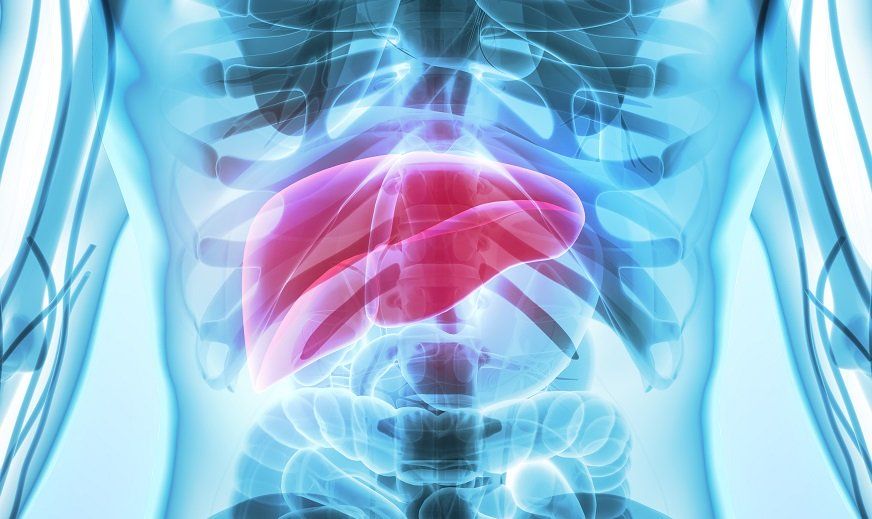News
Article
Birth Weight, Gestational Age Linked to Pediatric MASLD, Progressive Liver Disease Risk
Author(s):
Low birth weight and being small for gestational age were linked to a greater risk of developing pediatric-onset MASLD and progressive liver disease.
Fahim Ebrahimi, MD, MSc
Credit: Karolinska Institutet

Newborns with low birth weight or who were born small for gestational age (SGA) may face an increased risk of developing pediatric-onset metabolic dysfunction-associated steatotic liver disease (MASLD) and progressive liver disease, according to findings from a recent study.1
The study was published in JAMA Network Open and leveraged data from the nationwide Epidemiology Strengthened by Histopathology Reports in Sweden (ESPRESSO) cohort, with results suggesting MASLD and MASLD-associated progressive liver disease have developmental origins requiring structured screening measures to diagnose these conditions early in high-risk individuals.1
MASLD, formerly known as nonalcoholic fatty liver disease (NAFLD), is the most common chronic liver disease in the world, affecting more than 30% of the global population.2 In some patients, MASLD progresses to metabolic dysfunction-associated steatohepatitis (MASH), although little is known about the potential factors influencing MASLD and subsequent fibrosis/cirrhosis risk.3
“Compared with MASLD in adults, pediatric-onset MASLD appears to have an even more aggressive natural history, with a higher incidence among young individuals already having histologic evidence of MASH and at stages of advanced fibrosis or even cirrhosis at the time of diagnosis. Therefore, it has been hypothesized that MASLD and particularly MASLD-associated progressive liver disease may have developmental origins in early life,” Fahim Ebrahimi, MD, MSc, a postdoctoral researcher at Karolinska Institutet and gastroenterologist at Clarunis University Center for Gastrointestinal and Liver Diseases in Switzerland, and colleagues wrote.1 “Several studies have shown a U-shaped association between birth weight and the development of obesity, metabolic syndrome, and cardiovascular disease, but the evidence for MASLD is less clear.”
To determine whether perinatal conditions are associated with MASLD and progressive liver disease risk, investigators conducted a population-based, matched case-control study using the nationwide ESPRESSO cohort, which encompasses all liver histopathologic examination findings from all 28 pathology departments in Sweden between 1965 and 2017. All children, adolescents, and young adults aged ≤ 25 years of age with a biopsy-proven diagnosis of MASLD who were born in Sweden between January 1, 1992, and December 31, 2016. Individuals with any concomitant chronic liver disease on or before the index date were excluded.1
Individuals who met the criteria for MASLD were classified into 2 main groups according to liver histologic findings using Systematized Nomenclature of Medicine definitions for consistent nationwide histopathology reporting in Sweden: nonsevere MASLD, including simple steatosis or MASH without fibrosis, and MASLD-associated progressive liver disease, including MASLD with noncirrhotic fibrosis or cirrhosis due to MASLD. Each individual was then matched to up to 5 reference individuals from the general population (control individuals) without recorded MASLD based on age at the index diagnosis date, sex, calendar year of the index date, and county of residence.1
Investigators identified mothers of patients with biopsy-proven MASLD and controls and retrieved detailed data on maternal and pregnancy-related parameters from the Swedish Medical Birth Register. Gestational age (GA) at delivery was categorized as preterm (<37 weeks), full term (37-41 weeks, used as the reference category), or postterm (≥42 weeks). Birth weight was categorized as low (<2500 g), reference (2500 to <4000 g), or high (≥4000 g). Birth weight for GA was defined according to the World Health Organization definition as SGA (<10th percentile), appropriate for GA (10th-90th percentile, used as the reference category), or large for GA (LGA; >90th percentile).1
The main outcome was the odds of biopsy-proven MASLD and MASLD-associated progressive liver disease according to birth weight, GA, and birth weight for GA, adjusted for matching factors.1
In total, investigators identified 165 individuals in the ESPRESSO cohort with a diagnosis of MASLD confirmed by liver biopsy, of whom 70 (42.4%) were children (≤ 10 years of age), 70 (42.4%) were adolescents (11-17 years of age), and 25 (15.2%) were young adults (18-25 years of age). Among the cohort, the median age at diagnosis was 12 (Interquartile range [IQR], 4.4-16.9) years and 60.6% of individuals were male. Investigators matched these 165 young individuals with MASLD to 717 controls.1
Individuals with MASLD had a lower median birth weight compared with matched controls (3350 g vs 3590 g; P <.001). Investigators observed an inverse association between birth weight and odds of MASLD, with an adjusted odds ratio (AOR) of 0.92 (95% CI, 0.89-0.95) for each additional 100 g of birth weight. Upon analysis, there was an association between low birth weight and future development of MASLD (AOR, 4.05; 95% CI, 1.85-8.88) but no association between high birth weight and odds of MASLD (AOR, 0.64; 95% CI, 0.38-1.08) compared with the reference birth weight.1
Additionally, while GA was not associated with MASLD, being born SGA, but not LGA, was associated with greater odds of future MASLD (SGA: AOR, 3.36; 95% CI, 2.00-5.64; LGA: AOR, 0.57; 95% CI, 0.27-1.20) compared with those born with size appropriate for GA.1
Investigators noted 76 individuals with MASLD (46.1%) met the criteria for progressive liver disease with histologic evidence of either liver fibrosis or cirrhosis. They pointed out the odds of progressive liver disease were increased among individuals with low birth weight (AOR, 6.03; 95% CI, 1.66-21.87) and individuals born SGA (AOR, 4.90; 95% CI, 2.15-11.14). GA was not associated with the development of progressive liver disease, but being born LGA was associated with lower odds of progressive liver disease (AOR, 0.12; 95% CI, 0.03-0.62).1
Investigators acknowledged multiple limitations to these findings, including residual confounding despite careful matching and adjustment for various demographic and clinical confounders; the potential underpowering of some analyses; inherent risk of selection bias toward individuals with clinical suspicion of advanced liver disease; and the inability to adjust for ethnic background.1
“The study findings suggest that MASLD and MASLD-associated progressive liver disease have developmental origins, and it highlights the need for intensified preventive measures to reduce the number of small, vulnerable newborns and to implement structured screening measures to diagnose MASLD-associated progressive liver disease early in high-risk individuals,” investigators concluded.1
References
- Ebrahimi F, Yao J, Hagström H, et al. Birth Weight, Gestational Age, and Risk of Pediatric-Onset MASLD. JAMA Netw Open. 2024;7(9):e2432420. doi:10.1001/jamanetworkopen.2024.32420
- AASLD. New MASLD Nomenclature. Accessed September 10, 2024. https://www.aasld.org/new-masld-nomenclature
- Cleveland Clinic. Metabolic Dysfunction-Associated Steatotic Liver Disease. Diseases and Conditions. February 5, 2022. Accessed September 10, 2024. https://my.clevelandclinic.org/health/diseases/22437-non-alcoholic-fatty-liver-disease#outlook-prognosis





